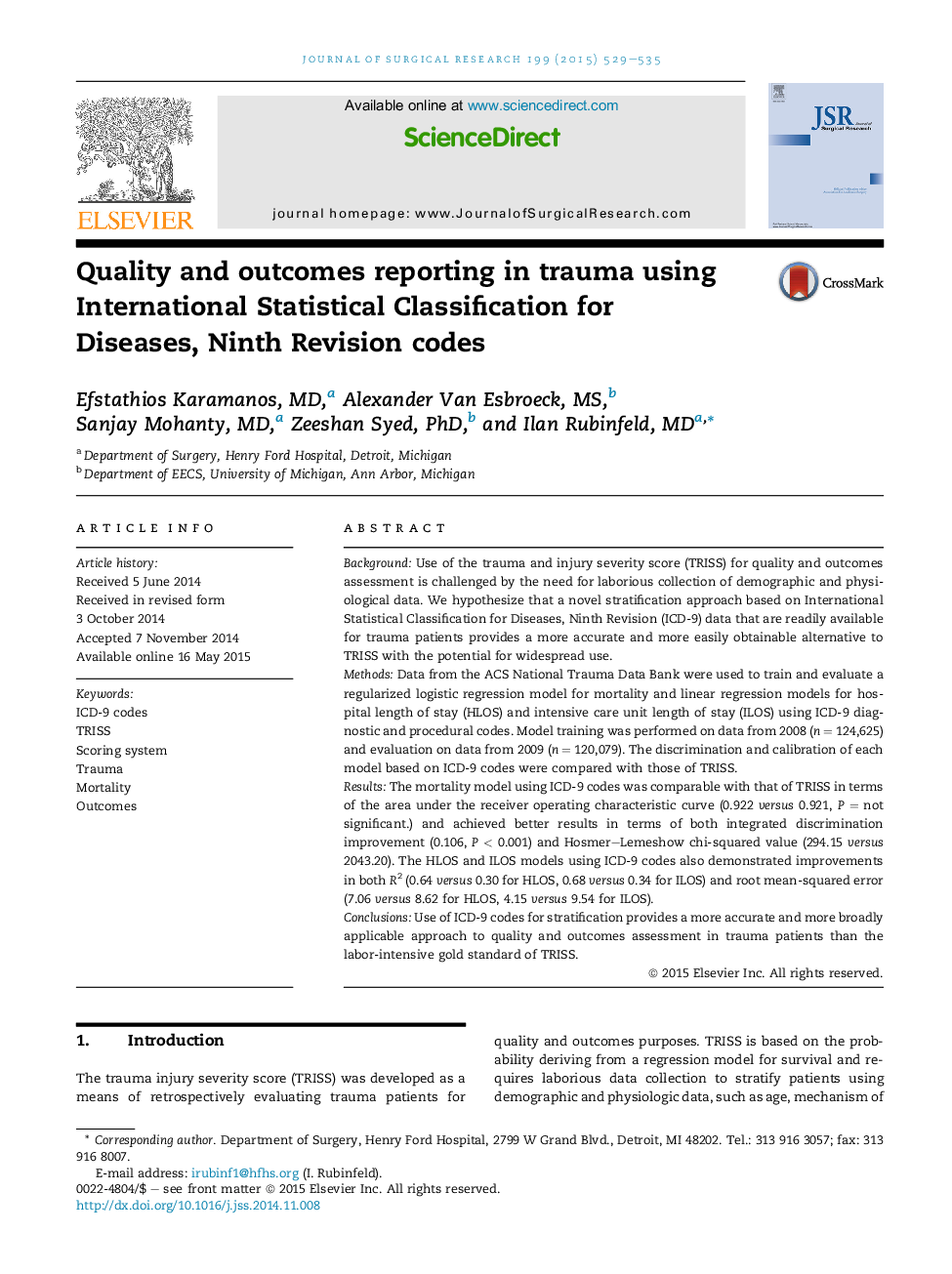| Article ID | Journal | Published Year | Pages | File Type |
|---|---|---|---|---|
| 6253537 | Journal of Surgical Research | 2015 | 7 Pages |
BackgroundUse of the trauma and injury severity score (TRISS) for quality and outcomes assessment is challenged by the need for laborious collection of demographic and physiological data. We hypothesize that a novel stratification approach based on International Statistical Classification for Diseases, Ninth Revision (ICD-9) data that are readily available for trauma patients provides a more accurate and more easily obtainable alternative to TRISS with the potential for widespread use.MethodsData from the ACS National Trauma Data Bank were used to train and evaluate a regularized logistic regression model for mortality and linear regression models for hospital length of stay (HLOS) and intensive care unit length of stay (ILOS) using ICD-9 diagnostic and procedural codes. Model training was performed on data from 2008 (n = 124,625) and evaluation on data from 2009 (n = 120,079). The discrimination and calibration of each model based on ICD-9 codes were compared with those of TRISS.ResultsThe mortality model using ICD-9 codes was comparable with that of TRISS in terms of the area under the receiver operating characteristic curve (0.922 versus 0.921, P = not significant.) and achieved better results in terms of both integrated discrimination improvement (0.106, P < 0.001) and Hosmer-Lemeshow chi-squared value (294.15 versus 2043.20). The HLOS and ILOS models using ICD-9 codes also demonstrated improvements in both R2 (0.64 versus 0.30 for HLOS, 0.68 versus 0.34 for ILOS) and root mean-squared error (7.06 versus 8.62 for HLOS, 4.15 versus 9.54 for ILOS).ConclusionsUse of ICD-9 codes for stratification provides a more accurate and more broadly applicable approach to quality and outcomes assessment in trauma patients than the labor-intensive gold standard of TRISS.
